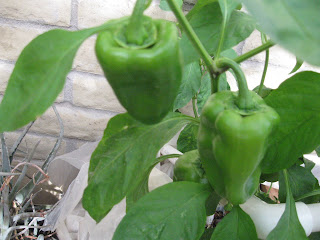


Sub Irrigated or Self watering planters have a reservoir in the bottom to hold water. The planter consists of two recycled 5 gallon buckets, drilled for a wick cup, aeration, drainage and a watering pipe. Most planters just have a hole in the bottom for drainage but in an effort to conserve every drop of precious water, these planters offer a viable solution to water conservation.
Potting soil is suspended above a water reservoir by means of a perforated barrier. Circular "wicking chambers" reach down into the reservoir and draw water up into the plant's roots. The reservoir is refilled by means of a pipe that comes out the top of the pot and the soil in the pot is covered with a layer of plastic that acts as mulch. Depending on how deep the reservoir is, it's possible to go many days without having to add water. This arrangement, combined with the cover on the top and the overflow drainage hole, prevent wasteful overwatering that can occur with conventional pots.
I hope to be able to hook up a drip line from my rain barrels to water each reservoir. I have planted heirloom yellow pear, heirloom pink brandywine, ruger and cherry tomatoes. They are on the east side of the house to avoid the hot afternoon sun.




















 Sub Irrigated or Self watering planters have a reservoir in the bottom to hold water. The planter consists of two recycled 5 gallon buckets, drilled for a wick cup, aeration, drainage and a watering pipe. Most planters just have a hole in the bottom for drainage but in an effort to conserve every drop of precious water, these planters offer a viable solution to water conservation.
Sub Irrigated or Self watering planters have a reservoir in the bottom to hold water. The planter consists of two recycled 5 gallon buckets, drilled for a wick cup, aeration, drainage and a watering pipe. Most planters just have a hole in the bottom for drainage but in an effort to conserve every drop of precious water, these planters offer a viable solution to water conservation. 










